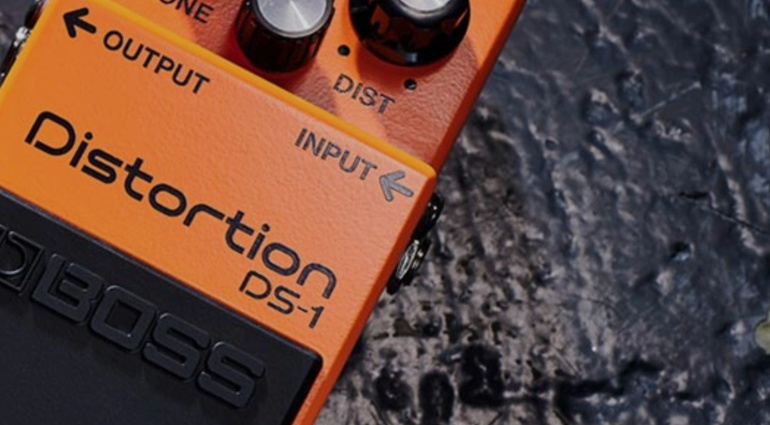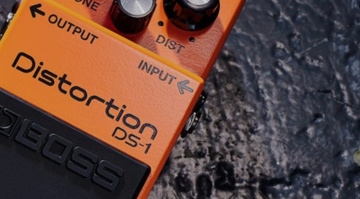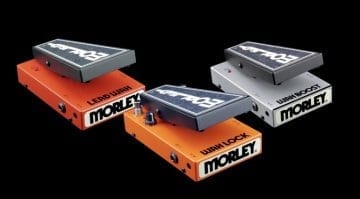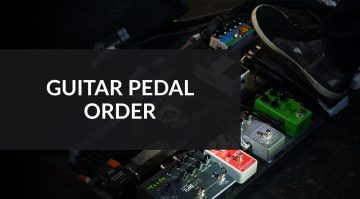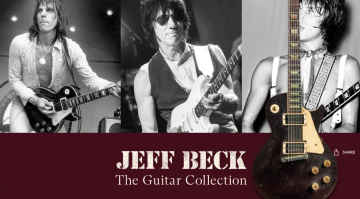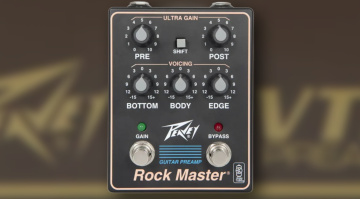The Best Distortion Pedals in Every Price Range – Budget to Boutique
Find the right tone for your budget!
The gentle overdrive from your power amp tubes just doesn’t cut it anymore? Do you need it to be cutting-through but still musical? Don’t worry, we’ve got something for you – the best distortion pedals in every price range. Check out our distortion pedal buyer’s guide!
Originally published at Gearnews.de by Jan Rotring, translation by Julian Schmauch.
Distortion Pedals in Every Price Range
Overdrive vs. Distortion
The technical difference between overdrive and distortion is rather simple. However, what’s more important for most guitarists is the difference in sound.
Overdrive, the overdriven sound of power amps, is rich in harmonic overtones. Although the sound is distorted similarly to distortion, it is closer to the sound’s natural characteristics. As a rule, our ear perceives overdrive as less harsh and cold.
The way a distortion pedal works is geared towards the sound of an overdriven preamp. The resulting overtones are less harmonious and have a colder, more metallic feel. Can you guess which genre might need that?
Each Distortion Pedal Is Different
Today, the pedal market is overflowing with all kinds and types of distortion, so it can get a bit overwhelming when selecting the best distortion pedal for you. Fortunately, some points will help you choose the right distortion pedal.
In the following sections, we’ve compiled a list of popular distortion pedals that should satisfy everyone from beginners to boutique fans.
Best Distortion pedals up to €50
The entry-level price range is particularly interesting for guitarists who want to cover a wide range of effects or who only need to include the corresponding pedals in their setup from time to time. We have highlighted three representatives of the sub-€50 category.
Harley Benton Extreme Metal
Stepping into the pedal business was certainly a big decision for Harley Benton. Meanwhile, however, the predals from the Thomann-owned brand have made a name for themselves. This includes the Extreme Metal Pedal (great name, by the way). It’s an analog distortion pedal equipped with a 3-band EQ and a simple design with boost, volume and drive controls.
The potentiometers’ control is very subtle, and the variety of sounds is broad, at least in the more extreme metal styles. The price-performance ratio is, as often, pretty much unparalleled.

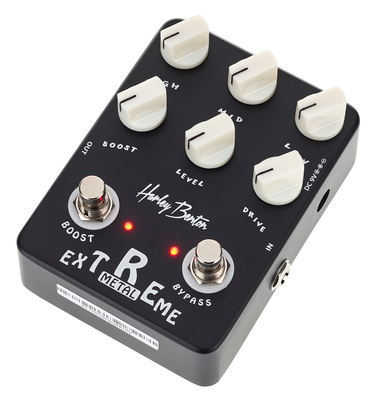
Behringer HM300
Cloning, emulating, honoring, drawing inspiration from -. who knows what’s what anymore! Either way, the Behringer HM300 does that – at a fraction of the price. This beast of a distortion pedal, and the original it is similar to, have become the foundation of many Death Metal band’s guitar sound.
It comes with a 2-band EQ (lows and mids, and controls for input and output gain. That’s it. But you need nothing more to make it scream. The HM300 will get you into very evil metal territory quickly.
You can also run it on a 9 volt battery, if you forgot your power supplies in the rehearsal room again – nifty!

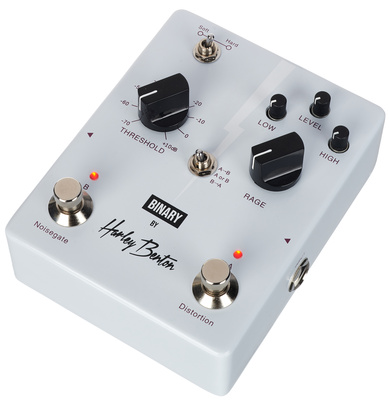
TC Electronic Dark Matter
The TC Electronic Dark Matter features a 4-knob interface that controls 2-bands of EQ, saturation, and output level. The additional mini-switch “Voice” allows you to choose between a more vintage-oriented and moderate sound and a more modern, meaner sound.
The Dark Matter’s gain control is especially exciting because it changes not only the gain level but also its character. While low gain settings can produce an almost bluesy, British crunch, higher settings can achieve the sonic territory of early Iron Maiden and Judas Priest. At full blast, the pedal delivers plenty of saturation and sustain for hair metal and thrash—but not quite for modern black or death metal styles.
All in all, the Dark Matters distortion pedal delivers an almost tame, natural variant of distortion. However, if an already distorted amp is behind the pedal, things get serious.

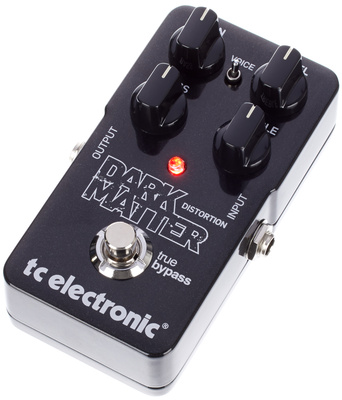
The Best Distortion Pedals Up To 150€
In this price range, both the quality of workmanship and sound qualit are in focus. Which three pedals stand out in my experience? See for yourself:
ProCo Rat 2 Distortion/Overdrive Pedal
The ProCo Rat 2 is technically a distortion pedal that produces a hard clipping distortion, but it can sound almost like an overdrive pedal at lower settings and produce a fuzz-like sound at higher settings. Quite the versatile beast!
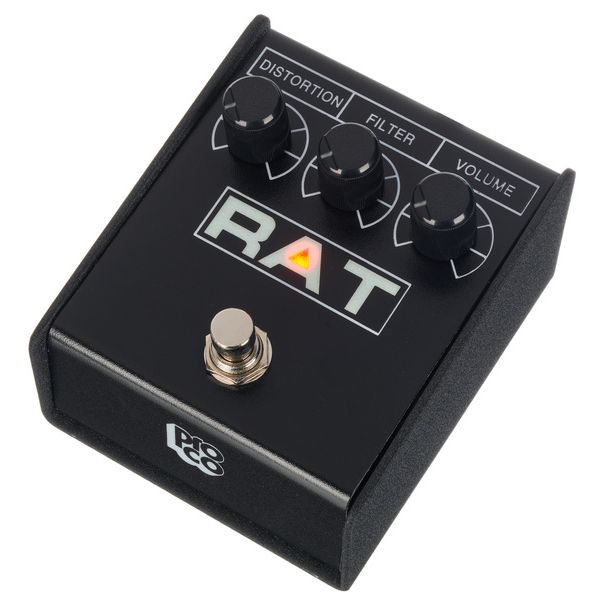
One of the Rat 2’s standout features is that even at fuzzier settings, it never sounds too compressed. It manages to maintain a certain clarity and presence in the sound that’s hard to replicate. This sets the rRat apart from other distortion pedals like the Boss DS-1, which is known for its increasing compression at higher distortion settings.
It is best known for its widespread use in grunge, rock and punk in the 1990s, and it’s less suitable for extreme metal sounds. However, its sonic characteristics are all highly musical and can be easily accommodated in modern settings. A true classic and one of the best distortion pedals of all time.

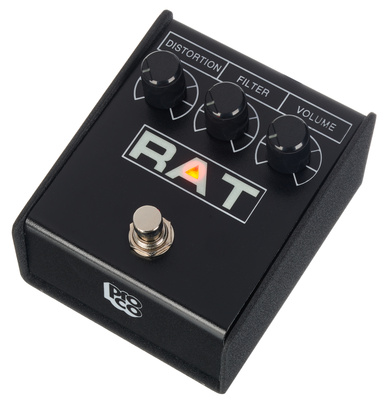
Boss MT-2 Distortion-Pedal
Few distortion pedals were as controversial upon release as the MT-2. Love it or hate it, the Boss Metal Zone is and remains a milestone in guitar culture.
In the upgraded Waza edition, the analog distortion works on two gain stages, which focus in the signal’s mid frequencies. In “standard mode”, the classic Boss MT-2 sounds are processed with a touch more clarity and, above all, its rather annoying background noise is reduced significantly.
The new custom mode offers guitarists the chance to get more gain without sacrificing dynamics. The sound of the Metal Zone is still a matter of taste. But honestly, sometimes, yes, it’s just got to be there.

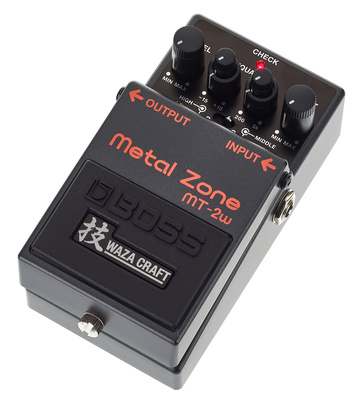
Boss DS-1w Waza
The DS-1 is the most classic of all distortion pedals, and Boss’s best-selling pedal of all time! Since 1978 (!), the DS-1 has been the go-to pedal for harder styles.
In the recent Waza edition, DS-1 gets a second mode, like the MT-2. In standard mode, the sounds go through a strong distortion circuit but remain balanced and clear at the amp. The new custom mode ups the ante and gives you very tightly tightened mids and an extra portion of gain on top.
Made in Japan, rock-solid and almost indestructible, the Boss DS-1w is currently my favorite “standard distortion.”

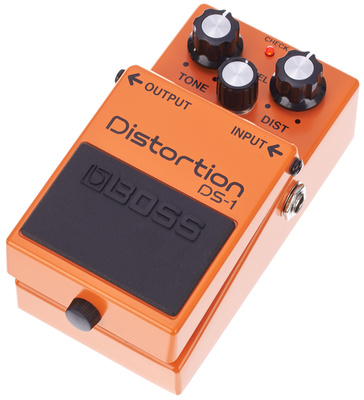

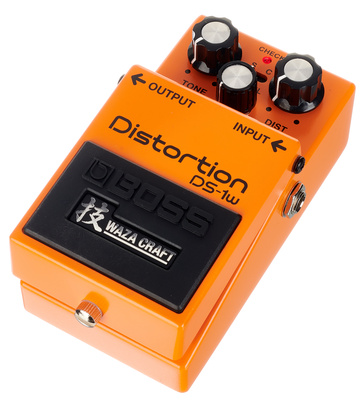
Best Distortion Pedals Over €150
The highest price range includes more specialized distortion pedals, such as the Catalinbread Sabbra Cadabra.
The workmanship, sound and range of the pedals in our selection in this price range are beyond reproach. However, their areas of application might also be rather limited.
Walrus Audio Iron Horse V3
Wunderschöne Grafiken und sehr eigene (positiv!) Klangcharakteristiken machen die Pedale von Walrus Audio insgesamt begehrenswert. Das Walrus Audio Iron Horse V3 ist da keine Ausnahme.
It is a very powerful and versatile distortion pedal, offering a huge palette of sounds. It even comes with special clipping modes that allow you to vary from softer overdrive tones to more intense, saturated distortion.
Its simple controls and the ability to create classic and modern distorted sounds make it one of this list’s most versatile (and beautiful) pedals.

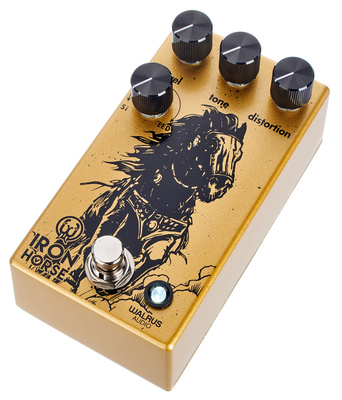
Boss HM-2W Heavy Metal Distortion-Pedal
The Boss HM-2W Heavy Metal Distortion Pedal, which is also part of the highly regarded Waza Craft series, is a modern interpretation of the legendary HM-2 pedal that became popular in the 1980s. This pedal was particularly known for its aggressive, so-called chainsaw sound, which is characteristic of Swedish death metal. And let’s be honest: apart from that, it has only limited uses.
Distortion, High, Low, and Level: these are the controls that provide simple but effective sonic control. The secondary mode switch is where it gets interesting. It switches between the classic HM-2 sound (standard mode) and a custom mode that offers an even tighter and more aggressive sound.
This custom mode in particular expands the bass range, making it more suitable for modern, lower-tuned guitars. Yes, it’s not versatile. Nevertheless, it is an excellent pedal for its specific niche.

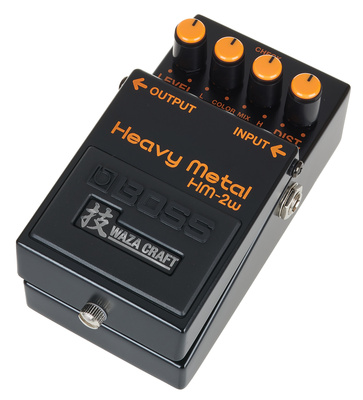
Catalinbread Sabbra Cadabra
The Catalinbread Sabbra Cadabra is an overdrive pedal modeled after the iconic, raw sound of Tony Iommi and Black Sabbath – hence the name.
The original Iommi sound developed from a combination of an always-on treble booster fed into the preamp of a Laney Supergroup amp, which was cranked to the max. The fact that this is no longer possible in the age of in-ear monitoring and maximum volume (not to mention impractical) was probably the main cause for the design of the Sabbra Cadabra. It’s meant to sound equally fat.
With controls for Presence, Gain, Volume 4 (named after the Black Sabbath album) and Range, you can precisely shape your desired sound of the pedal and adapt it to your own needs. Authentic Iommi sounds from slightly overdriven to high gain levels – what more could you want?

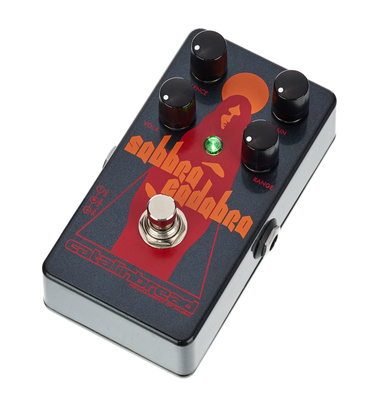
Conclusion
Few categories in the world of pedals are as overflowing as distortion. Suppose you only occasionally want to get out the tonal chainsaw. In that case, you are usually very well served with a cheaper pedal – especially since the budget pedals presented are all very well made.
If you regularly reach for the heavier sound, distortion pedals in the higher price ranges are even more versatile. In our experience, the pedals we presented here offer high-quality workmanship, tonal subtleties, and no “coldness” in the sound.
More on the Best Distortion Pedals
- TC Electronic Website
- Walrus Audio Website
- Catalinbread Website
- Boss Website
- Thomann Guide on Distortion Pedals*
*Disclaimer: This post contains affiliate links and/or widgets. When you buy a product via our affiliate partner, we receive a small commission that helps support what we do. Don’t worry, you pay the same price. Thanks for your support!

 3,2 / 5,0 |
3,2 / 5,0 | 